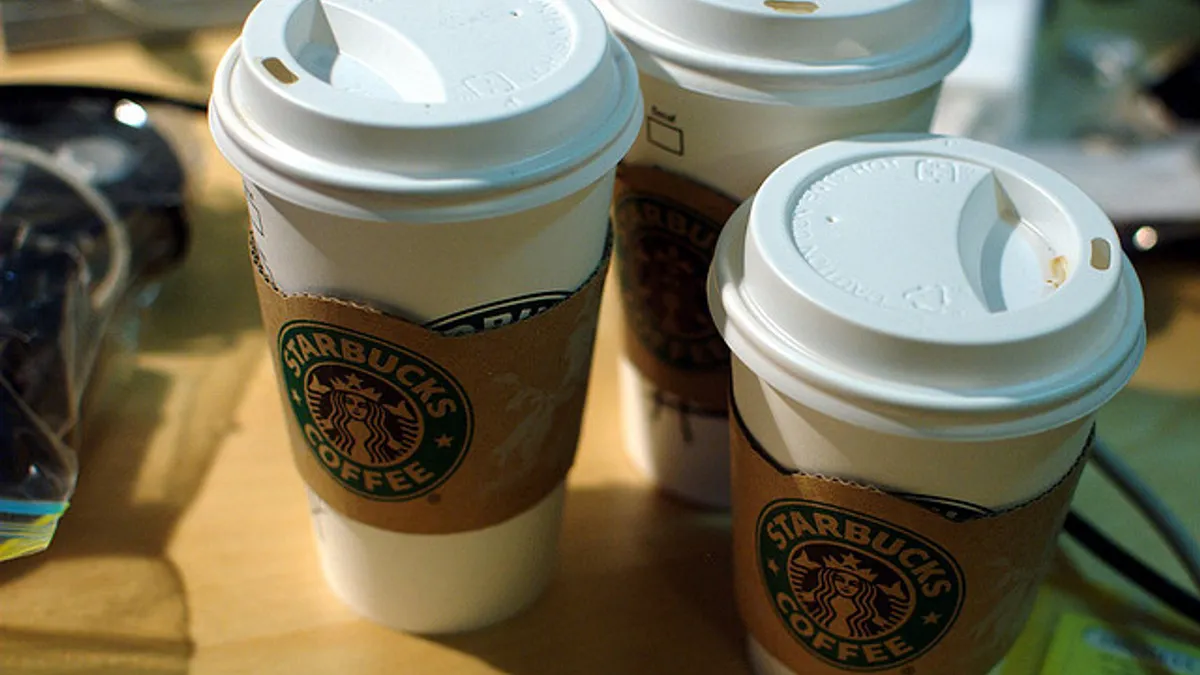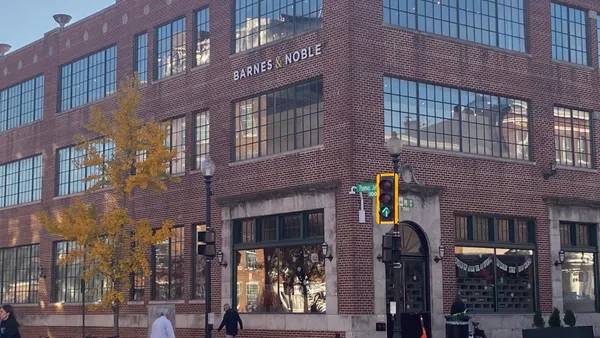Dive Brief:
-
Starbucks CEO Howard Schultz admitted in an interview with Bloomberg News this week that the coffee chain’s remote Mobile Order & Pay capability has been so popular that it has caused traffic jams around the barista station in some stores.
-
Schultz said the company will create separate stations dedicated to serving up mobile orders. The order-ahead feature is now being used by more than one-third of the eight million customers using the Starbucks mobile app to pay.
-
Schultz also hinted that Starbucks has more technology news to announce at the company’s annual shareholders meeting on March 22, an event that will occur just days before Schultz steps down from the CEO job in April, a previously announced move. He will continue as chairman of the company’s board of directors.
Dive Insight:
Before we talk about traffic jams, we have got to say we're looking forward to March 22. Starbucks has been aggressive on wireless technology adoption with its embrace long ago of Wi-Fi, and later its early charge into mobile payments. It's hard to say what it will surprise us with next, but we're wondering if it involves more new mobile capabilities.
Regarding those traffic jams, this issue has developed pretty quickly. Starbucks launched Mobile Order & Pay in early 2016, announced new features late last year and expanded it to include a voice ordering capability only recently. The quick rise in usage of the order-ahead capability suggests that retailers need to start thinking now about how future evolutions in the purchasing and payments process could affect everything from in-store operations to staffing needs, to perhaps even how stores are designed physically to handle traffic flow. For Starbucks, that future is now.
It turns out that no matter how much we all hate waiting in line at Starbucks to get our coffee fix — that line inching its way along the pastry counter, in which we spend an inordinate amount of time wondering if anyone ever orders cake pops, and whether or not we should start — an in-store line is a wonderfully predictable thing. This age-old tradition helps the customer and the store operator have a rough estimation of what they're in for.
Remote mobile ordering and payment throws a monkey wrench in the middle of that. This is probably not a surprise for Starbucks, which must have expected that managing orders and payment to become more difficult by a factor with the introduction of new mobile capabilities. The real surprise seems to be the immense and immediate popularity of this new way of ordering. It turns out it's not a nice-to-have, might-try-it-sometime kind of mobile app feature — it's a must-have, need-to-try-it-now-repeatedly kind of feature.
As Schultz suggested in other comments made to Bloomberg News, the in-store traffic jams aren't a terrible problem to have. Of course, that's the case only if something is done quickly to correct it, and Starbucks appears to be taking a pretty natural step to fix this problem. It will be interesting to see how the creation of a dedicated mobile order station affects in-store operations overall, as well as the coffee chain's bottom line.
Other fast food and convenience retailers still formulating their mobile app and payment strategies would do wise to take note of how quickly Starbucks has reacted to this emerging congestion issue, and how it continues to respond to it. Enabling mobile capabilities can be a positive evolution for many retailers, but once they get going, the future can come at them quickly, giving them everything they want, and maybe one or two things they weren't expecting.












